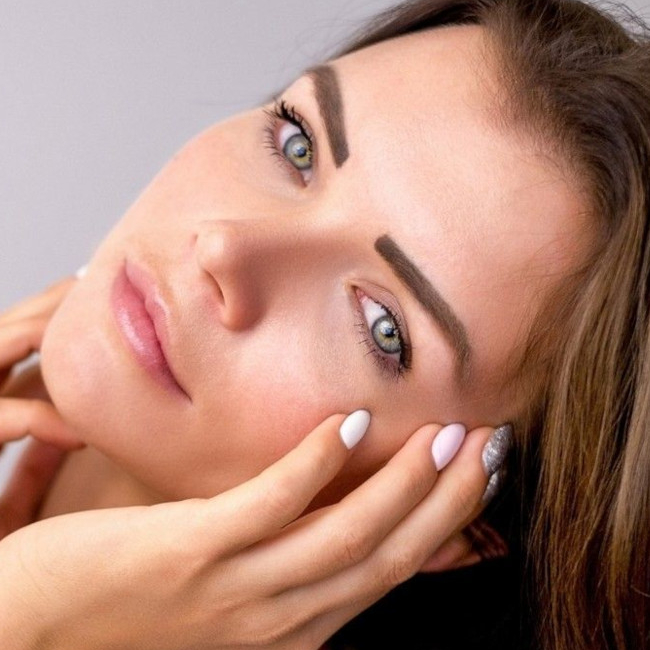Procedures
Xanthelasma

Xanthelasma, those yellowish patches you might see around the corners of your eyes, are more than just a cosmetic concern. They are a type of xanthoma, which means they are cholesterol deposits that have built up under the skin. Although they are not harmful in themselves, their appearance can be a source of concern due to the implications for your overall health, particularly heart health.
The plaques typically appear on the upper or lower eyelids, most commonly near the inner corners of the eyes. They can vary in size and sometimes merge into larger plaques. Their texture is soft, and their presence alone should not cause any discomfort to your eyes or sight. Despite this, the emotional impact of noticeable skin changes should not be underestimated. Many people feel uncomfortable knowing the plaques are visible to others, which can affect how they feel about themselves and interact in social settings.
While Xanthelasma can affect anyone, certain factors increase your likelihood of developing these plaques. These include genetics, high cholesterol levels, liver disease, and diabetes. If you have noticed these yellow plaques around your eyes, it is advisable to see Consultant Plastic Surgeon Anca Breahna. Not only can treatment help reduce their appearance, but it can also serve as a motivator to review your cholesterol levels and overall cardiovascular health.
At a glance
Table of Contents
What is Xanthelasma?
Xanthelasma is a medical condition characterised by the development of benign, fatty deposits underneath the skin around your eyelids. These deposits are primarily composed of cholesterol and are yellowish in colour, soft in texture, and generally non-tender. Although these plaques themselves are harmless and do not affect your vision, their appearance might prompt concerns due to their association with lipid disorders.
Diagnostically, Xanthelasma can be identified by its distinctive look, but Anca will likely recommend a lipid profile test to check for hyperlipidaemia – a condition where lipid levels in your bloodstream are higher than normal. This is important because, while Xanthelasma does not cause physical discomfort, it could be indicative of more serious health issues such as heart disease or high cholesterol, which require medical attention and possibly lifestyle changes.
Who Needs Xanthelasma Treatment?
If you are considering whether to seek treatment for Xanthelasma, it is essential to consider both the physical and psychological aspects of the condition. Physically, while Xanthelasma is not dangerous, its appearance on a highly visible part of your body – the face – can lead to discomfort or dissatisfaction with your appearance. This is often enough reason for many to seek treatment.
From a psychological perspective, the presence of Xanthelasma can affect how you see yourself and how you believe others see you. This can impact your social interactions and how comfortable you feel in public settings. If these plaques are causing you anxiety or affecting your social life, seeking treatment can help improve your quality of life.
Medically, treatment might be recommended if you have underlying lipid abnormalities. People with familial hypercholesterolemia (a genetic disorder that results in high cholesterol levels) or those who have a general predisposition to heart disease might opt for Xanthelasma removal as part of a broader health management plan.
Benefits of the Xanthelasma Procedure
Opting for a procedure to remove Xanthelasma can have several benefits, primarily aimed at improving the appearance of your eyelids and, by extension, enhancing how you feel about your looks.
Beyond the aesthetic improvements, the procedure can also have psychological benefits. The presence of Xanthelasma might make you feel self-conscious or overly aware of your appearance, potentially affecting your social interactions and how you present yourself in both personal and professional settings
Furthermore, the removal of Xanthelasma can act as a proactive step in managing your overall health. For many, these plaques serve as a visible reminder of underlying health issues, such as high cholesterol or other lipid metabolism disorders. The process of getting treated for Xanthelasma often involves a health evaluation, which includes c
Types of Procedures for Xanthelasma
Surgical Excision
This is a precise procedure where the plaques are surgically removed using a scalpel. It is generally preferred when the plaques are large or thick, as it allows for complete and immediate removal. The primary downside is that it can leave scars, although they are typically small and can be treated with post-operative care.
Cryotherapy
This involves the application of extreme cold to destroy the fatty cells within the plaques. It is less invasive than surgery and is often used for smaller plaques. The treatment may require several sessions to achieve complete removal, and there is a risk of pigmentation changes in the treated area.
Laser Ablation
A highly precise method that uses laser technology to vaporise the cholesterol deposits. This procedure is renowned for its accuracy and minimal impact on surrounding tissues, which reduces the risk of scarring. Laser ablation is suitable for a wide range of Xanthelasma cases and is often chosen for its aesthetic results.
Chemical Peels
In this method, a chemical solution is applied to the affected area, which helps dissolve the cholesterol deposits over time. Chemical peels are generally preferred for smaller and less thick plaques and might require multiple applications to achieve the desired outcome.
How is the Xanthelasma Procedure Performed?
The procedure to remove Xanthelasma is performed on an outpatient basis, meaning you can go home on the same day as the treatment. Regardless of the method chosen, local anaesthesia is commonly applied to the area around your eyes to minimise discomfort during the procedure.
In the case of surgical excision, Anca will use a scalpel to carefully cut out the plaques. This method provides immediate results; however, it requires precision and care to minimise the impact on surrounding tissues and to reduce scarring. After the plaques are removed, the small incisions may be closed with sutures, which are usually removed after a week or so.
Laser treatments involve using a focused beam of light to vaporise the cholesterol deposits. This method is highly precise and can reduce the risk of scarring compared to surgical excision. The laser settings can be adjusted according to the depth and size of the plaques, ensuring that the surrounding skin is not affected.
Cryotherapy uses a very cold substance, usually liquid nitrogen, to freeze the plaques. This method causes the cells within the plaques to rupture and die, leading to a gradual clearing of the area. Multiple sessions may be needed for complete removal, and there is a slight risk of temporary pigmentation changes in the treated area.
Chemical peels involve applying a chemical solution that helps dissolve the fatty deposits over time. This method is less invasive and can be an excellent option for patients with smaller plaques or those who prefer a less aggressive approach to treatment.
When deciding on a treatment for Xanthelasma, it is essential to understand the different options available and how they suit your specific needs. The choice of procedure will largely depend on the size, number, and thickness of the plaques, as well as your overall health and treatment preferences. Xanthelasma procedure includes Surgical Excision, Cryotherapy, Laser Ablation, and Chemical Peels.
Each of these methods has its benefits and potential drawbacks, and the best choice for you will depend on various factors including your skin type, the size of the plaques, desired recovery time, and personal health history. Discussing thoroughly with Anca will ensure that you choose the safest and most effective method for your situation.
Recovery After Xanthelasma Procedure
The recovery process following a Xanthelasma removal procedure varies depending on the method used, but there are common guidelines that can help ensure a smooth and efficient healing period. It’s important to remember that the eyelid is a sensitive area, so some swelling and bruising can be expected regardless of the procedure type.
Post-Procedure Care
Immediately after the procedure, it is likely that the treated area will be covered with a small bandage, especially if surgical excision was performed. This helps to protect the site from infection and to absorb any minor bleeding. Ice packs are often recommended for the first 24-48 hours to help reduce swelling and discomfort. You should be cautious not to apply ice directly to the skin; instead, wrap it in a cloth or use a commercial cold pack.
Anca might prescribe antibiotic creams or ointments to apply to the area to prevent infection and assist in healing. If sutures were used, they are removed within a week after the procedure. Pain relief medications can be taken to manage any discomfort. However, it’s essential to avoid aspirin or other non-steroidal anti-inflammatory drugs (NSAIDs) that can increase the risk of bleeding.
Activities and Lifestyle
Rest is important in the first few days after the procedure. You should avoid strenuous activities and keep your head elevated to help reduce swelling. It’s also advisable to avoid any activities that can increase blood flow to the eyes, such as bending, lifting, or rigorous exercise, for at least a week.
Sun protection is vital during the healing process. The skin around the eyes will be more sensitive to sunlight, so wearing sunglasses and applying sunscreen around the area (once the skin has healed sufficiently to tolerate it) will help prevent pigmentation changes and protect the delicate skin from UV damage.
Follow-Up and Monitoring
Follow-up appointments are an important aspect of post-procedure care. These appointments allow Anca to monitor your healing and ensure that there are no complications, such as infection or abnormal scarring. It also provides an opportunity to discuss any concerns you may have about your recovery and the results of the procedure.
If you notice any unusual symptoms, such as increased pain, redness, or discharge from the treated area, you should contact Anca immediately. These could be signs of infection or other complications that might require additional treatment.
Long-Term Care
Even after you have recovered from the procedure, maintaining good skincare and health practices is important. As Xanthelasma can recur if underlying issues such as high cholesterol are not managed, you should continue to monitor your cholesterol levels and adhere to any dietary or lifestyle changes recommended by Anca.
Reviews
Patient satisfaction is the top priority for Anca. You can find how patients feel about her work below.
I’m Absolutely Delighted with the Results from my Blepharoplasty
I decided to have a Blepharoplasty as I had tired looking eyes, excess skin and droopy eyelids. Anca Breahna was the consultant who performed my surgery, who I am so grateful for. From the initial consultation to the post surgery appointments, Anca was professional, attentive and caring. Anca is so calmly reassuring, I felt extremely safe in her hands, which made me worry less about the procedure. As any surgery can be somewhat nerve-racking, even if it’s elective. I could not be happier with the results, I have almost no scarring, and it’s only been three months since my surgery. Wearing eye makeup is a joy again. Thank you Anca and the team.

I decided to have a Blepharoplasty as I had tired looking eyes, excess skin and droopy eyelids. Anca Breahna was the consultant who performed my surgery, who I am so grateful for. From the initial consultation to the post surgery appointments, Anca was professional, attentive and caring. Anca is so calmly reassuring, I felt extremely safe in her hands, which made me worry less about the procedure. As any surgery can be somewhat nerve-racking, even if it’s elective. I could not be happier with the results, I have almost no scarring, and it’s only been a couple of months since my surgery. Wearing eye makeup is a joy again. Thank you Anca and the team.
How Much Does the Xanthelasma Procedure Cost in the UK?
The cost of a Xanthelasma procedure can vary widely depending on several factors including the type of treatment, the expertise of the surgeon, the location of the clinic, and whether additional diagnostic tests are required. In the UK, the price range for these procedures can start from a few hundred pounds for simpler treatments such as chemical peels or cryotherapy to several thousand pounds for more complex and precise methods like laser ablation or surgical excision.
Factors Influencing Cost
- Type of Procedure: More technologically advanced procedures like laser treatment tend to be more expensive compared to traditional methods like cryotherapy or chemical peels due to the equipment and expertise required.
- Surgeon’s Expertise: Surgeons with extensive experience and a good reputation might charge more for their services but also tend to offer higher success rates and more aesthetically pleasing results.
- Geographical Location: Costs can also vary significantly between different regions and practices, with clinics in metropolitan areas often charging more than those in rural areas.
Cost of Surgery Guide

Further Reading
- Read Anca’s Blog on Causes and Treatments for Eyelid Ptosis
- Read Anca’s Blog on How to Reduce Swelling and Bruising after Blepharoplasty Surgery
- Read Anca’s Blog on Recovery after Eyelid Surgery

Procedure
Frequently asked questions
What are the risks associated with Xanthelasma removal procedures?
While Xanthelasma removal is generally safe, as with any medical procedure, there are potential risks involved. These risks depend largely on the type of treatment used but can include scarring, changes in skin pigmentation (either hypo or hyperpigmentation), and temporary nerve damage that could cause numbness or tingling around the treated area. There’s also a small risk of eye injury, especially with procedures close to the sensitive eye region. Infection is another potential risk, although it’s relatively rare if post-procedure care guidelines are followed correctly.
Can Xanthelasma disappear on its own without treatment?
Xanthelasma plaques usually do not disappear without treatment. In most cases, they tend to grow larger or remain the same size. Treatment is the only definitive way to remove these plaques, although modifying your diet and managing blood cholesterol levels can help prevent further development.
Is Xanthelasma linked to other skin conditions?
Xanthelasma is primarily associated with lipid disorders and is not directly linked to other skin conditions. However, patients with Xanthelasma often have higher incidences of conditions linked to high cholesterol and lipid abnormalities, such as heart disease. It’s always a good idea to monitor any skin changes and consult with a healthcare provider to rule out related health issues.
Are there any dietary changes I can make to help manage or prevent Xanthelasma?
Yes, dietary changes can play a significant role in managing and preventing Xanthelasma, especially if you have underlying cholesterol issues. Reducing intake of saturated fats and cholesterol-rich foods can help lower blood cholesterol levels. Incorporating more fruits, vegetables, whole grains, and lean proteins can also help. Additionally, foods rich in omega-3 fatty acids, like fish, can be beneficial. Always consult with a dietitian or your healthcare provider before making significant changes to your diet.
Can Xanthelasma be a sign of a more serious condition?
Yes, while Xanthelasma itself is not harmful, its presence is often associated with higher cholesterol levels, which can increase the risk of heart disease. Therefore, if you have Xanthelasma, it is advisable to undergo a full lipid profile test and get screened for cardiovascular diseases. Early detection of these conditions can significantly improve the effectiveness of treatment and management.
Medical References about Xanthelasma
- Xanthelasma: Causes, Symptoms, Treatment, and More – WebMD
- Xanthelasma Palpebrarum – NCBI
- Xanthelasma: Background, Pathophysiology, Epidemiology – Medscape
- Cholesterol deposits in the eyes: Symptoms and treatment – Medical News Today
- Xanthelasma: An Update on Treatment Modalities – PubMed
 Ms Anca Breahna, PhD, MSc, FEBOPRAS, FRCS (Plast) is a highly regarded Consultant Plastic Surgeon specialising in the field of Aesthetic and Reconstructive Plastic Surgery. Anca performs a range of
Ms Anca Breahna, PhD, MSc, FEBOPRAS, FRCS (Plast) is a highly regarded Consultant Plastic Surgeon specialising in the field of Aesthetic and Reconstructive Plastic Surgery. Anca performs a range of 